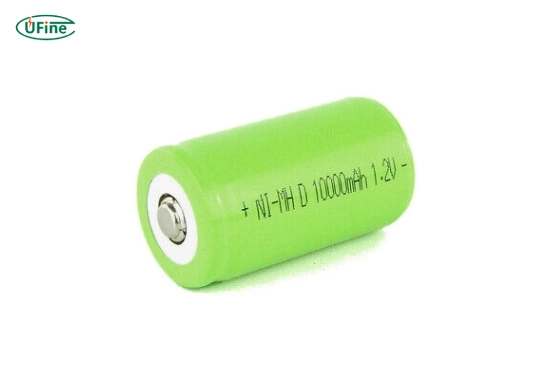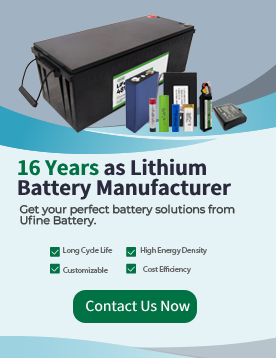D-size rechargeable batteries are essential for anyone who uses high-drain devices like flashlights, radios, toys, or medical equipment. But when you’re trying to decide between Lithium and NiMH (Nickel-Metal Hydride) batteries, the choice isn’t always obvious.
You may be asking yourself:
Which battery type lasts longer? Which is safer, more efficient, and better for my specific device?
This comprehensive guide explores the differences, advantages, and use cases of Lithium vs. NiMH D-size rechargeable batteries. We’ll also help you make the best choice based on performance, cost, safety, and more.
Let’s dive in.
Part 1. What are D-size rechargeable batteries?
D-size rechargeable batteries are large cylindrical batteries typically measuring 33.2 mm in diameter and 61.5 mm in height. These batteries are designed for high-capacity use and are commonly found in:
- Flashlights
- Portable radios
- Boom boxes
- Camping gear
- Emergency kits
- Medical instruments
- High-drain children’s toys
Unlike disposable alkaline batteries, D-size rechargeables are environmentally friendly and cost-saving in the long run.
Part 2. What are NiMH D-size rechargeable batteries?
NiMH (Nickel-Metal Hydride) D-size batteries are among the most common rechargeable options. They typically deliver 1.2 volts per cell and offer a capacity ranging from 2500 mAh to 10,000+ mAh.
Key characteristics of NiMH D batteries:
- Safe and stable chemistry
- Low internal resistance, meaning consistent voltage output
- Cost-effective
- Widely available
NiMH batteries are ideal for household devices that are used regularly but don’t require extremely high power.
Quick Tip: NiMH batteries work well in devices designed for 1.5V alkaline batteries, even though they only deliver 1.2V. That’s because they maintain their voltage better under load.
Part 3. What are lithium D-size rechargeable batteries?
Lithium D-size rechargeable batteries are more advanced and powerful. They typically use Lithium-ion or LiFePO4 chemistry and deliver 3.6V to 3.7V per cell.
Key characteristics of lithium D batteries:
- High energy density (more power in a smaller size)
- Lightweight compared to NiMH
- Very low self-discharge (can hold charge for months)
- Longer lifespan (up to 2000 cycles)
- Performs better in extreme temperatures
These batteries are ideal for high-drain or critical-use devices, such as emergency flashlights, tactical gear, and scientific instruments.
Part 4. What are the key differences between lithium and NiMH D-size rechargeable batteries?
Before we look at the table, let’s briefly explain the significant differences:
Voltage Output
NiMH batteries provide 1.2V, which suits most household electronics.
Lithium batteries provide 3.6V or 3.7V, which can overpower devices not designed for them.
Capacity
Lithium batteries tend to have higher capacity (up to 14,000 mAh).
NiMH batteries are lower but more stable under load.
Cycle Life
Lithium batteries can last up to 2000 charges.
NiMH typically lasts 500-1000 cycles.
Weight and Size
Lithium is lighter.
NiMH is heavier but sometimes more robust.
Cost
NiMH is cheaper upfront.
Lithium offers better long-term value.
Detailed Comparison Table
| Feature | NiMH D Battery | Lithium D Battery |
|---|---|---|
| Nominal Voltage | 1.2V | 3.6V – 3.7V |
| Typical Capacity (mAh) | 2500 – 10,000 | 5000 – 14,000 |
| Weight per cell | ~160-180 grams | ~100-120 grams |
| Cycle Life | 500 – 1000 | 1000 – 2000 |
| Self-discharge rate | High (20-30%/month) | Low (1-2%/month) |
| Operating Temp Range | 0°C to 45°C | -20°C to 60°C |
| Initial Cost | $6-$12 per cell | $15-$25 per cell |
| Charger Compatibility | Standard NiMH charger | Requires Li-ion charger |
| Device Compatibility | Broad (1.5V-compatible) | Limited (voltage-sensitive) |
| Safety | Very safe | Needs protection circuits |
Part 5. Which D-size rechargeable battery lasts longer?
Lithium D size rechargeable batteries last longer than NiMH batteries both in:
- Single-use runtime (due to higher capacity and voltage)
- Lifetime use (more recharge cycles)
Example:
A 10,000 mAh NiMH battery in a radio might last 10 hours
A 14,000 mAh lithium battery in the same broadcast may last 14+ hours
If longevity is your top concern, lithium is the winner.
Part 6. Are lithium D-size rechargeable batteries safe?
Yes, but with a few precautions.
- Lithium batteries have a higher energy density, which can lead to overheating or fire if misused.
- Always use protection circuits (built into quality batteries).
- Only use chargers designed for lithium-ion cells.
NiMH batteries are inherently safer, making them a better choice for beginners or casual users.
Part 7. Which D-size rechargeable battery is better for high-drain devices?
When it comes to high-drain devices like:
- Tactical flashlights
- Emergency radios
- Power tools
Lithium batteries perform better due to:
- Higher voltage
- Better performance under load
- Superior efficiency at high discharge rates
NiMH batteries may be suitable for moderate-drain devices such as toys or clocks.
Part 8. How do D-size rechargeable batteries perform in cold temperatures?
Lithium batteries outperform NiMH in cold environments.
- NiMH batteries lose capacity quickly below 0°C
- Lithium batteries work well even at -20°C
Lithium is the better choice if you’re camping, hiking, or preparing for emergencies in winter.
Part 9. What’s the cost comparison over time?
At first glance, NiMH batteries are cheaper but wear out faster and don’t hold charge as long.
Let’s compare:
| Type | Initial Cost | Lifespan | Cost per Charge |
|---|---|---|---|
| NiMH | ~$10 | ~700 cycles | ~$0.014 |
| Lithium | ~$20 | ~1500 cycles | ~$0.013 |
Lithium batteries may seem expensive upfront, but they last longer and provide better value over time.
Part 10. Which D-size rechargeable battery should you choose?
Here’s a quick breakdown:
| Need | Best Battery Type |
|---|---|
| Budget-friendly replacement | NiMH |
| Long runtime & fewer recharges | Lithium |
| Use in extreme cold or hot environments | Lithium |
| Safer option for children’s toys | NiMH |
| High-drain equipment (tools, flashlights) | Lithium |
| Infrequent use (occasional backup power) | Lithium |
Choose NiMH if:
- You’re on a budget
- You use your devices daily
- You value safety over performance
Choose Lithium if:
- You need maximum power and runtime
- You use devices outdoor or in emergencies
- You want long-term savings
Artikel Terkait: D Battery vs. C Battery: A Comprehensive Comparison for Modern Applications
Part 11. FAQs about D-size rechargeable batteries
Can I use lithium D batteries in devices made for NiMH?
No, lithium batteries output 3.6V, while NiMH outputs 1.2V. Using lithium in a 1.2V device can cause damage or overheating. Always check voltage compatibility.
Do NiMH D batteries need a special charger?
Not necessarily. Most standard NiMH chargers work fine but ensure the charger supports D cell sizes specifically.
Are all lithium D batteries rechargeable?
No, only lithium-ion or LiFePO4 versions are rechargeable. Some lithium D batteries are primary (non-rechargeable) and should never be recharged.
How many times can I recharge each type?
NiMH: 500-1000 cycles
Lithium: 1000-2000 cycles
Lithium batteries generally last longer.
Do D-size rechargeable batteries lose charge over time?
Yes.
- NiMH: High self-discharge (20-30% per month)
- Lithium: Very low self-discharge (1-2% per month)
Lithium is better for long-term storage and emergency kits.
Related Tags:
More Articles

How to Choose the Best Floor Scrubber Battery for Commercial Cleaning?
Selecting the ideal floor scrubber battery ensures a long runtime, rapid charging, and minimal maintenance for efficient commercial cleaning operations.
Battery for Blower vs Battery for Leaf Vacuum: Which One Should You Choose?
Battery for blower vs leaf vacuum—learn the key differences in power, fit, and runtime to choose the right battery for your outdoor tool needs.
How to Choose the Right Battery for Blower?
Choosing the right blower battery? Consider voltage, capacity, chemistry & usage. This guide helps match the best battery for peak performance.
How to Choose the Best Insulated Battery Box for Lithium Batteries?
Choosing the Best Insulated Battery Box for Lithium Batteries? Discover key factors such as size, material, and safety for optimal protection and performance.
7 Critical Elements on a Lithium Battery Shipping Label
What must be on a lithium battery shipping label? Learn 7 key elements to ensure safety, legal compliance, and correct handling across all transport modes.





